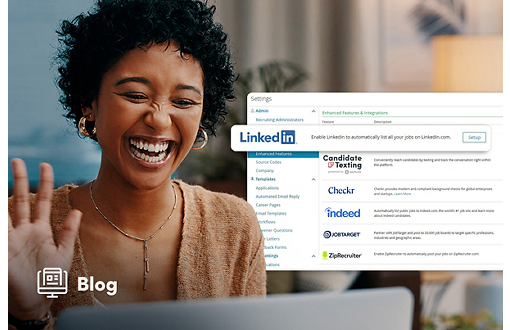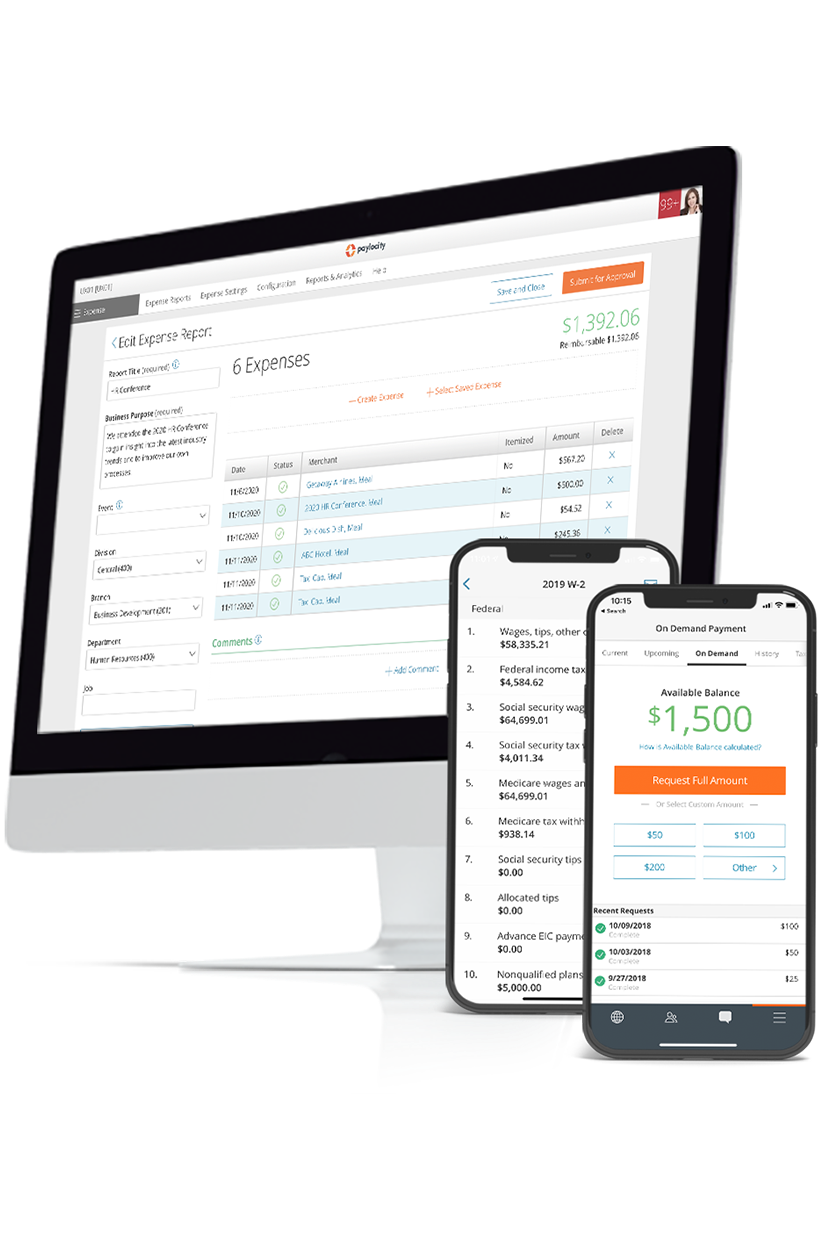resources
HR 101: What Are HRIS Integrations?
May 01, 2023
HRIS integrations help save time, increase efficiency, and improve the employee experience by expanding the capabilities of your HR system.
Blog Post

Saving time and increasing efficiency is top of mind for HR professionals across the board. So why would you use legacy solutions that don’t “talk” to one another?
The solution is HRIS integrations. Integrating your HRIS with other tools and systems can help you automate tasks, reduce manual data entry, and improve data accuracy. In this post, we'll explore what HRIS integrations are, the benefits they offer, real-world examples, and how to integrate your HRIS.
What Is an HRIS Integration?
An HRIS integration is a connection between your Human Resources Information System (HRIS) and other tools, software, or systems that improve efficiency and reduce manual work. An HRIS integration enables data to flow seamlessly between systems, eliminating the need for manual data entry and improving data accuracy.
With an HRIS integration, you can streamline your HR processes, automate tasks, and get a holistic view of your HR data in one place. A common method of HRIS integration uses webhooks.
What are Webhook Integrations?
Webhook integrations are a type of connection that allows two systems to communicate with each other automatically. Essentially, a webhook is a message sent by your HRIS to another system (like a benefits provider), triggered by a specific event (like a new employee added to the system). The receiving system uses the information provided by the webhook to update its own data or trigger an action.
Webhooks enable real-time data sharing between systems and help to ensure data is accurate and up to date everywhere. To use webhook integrations, you typically need to set up the integration between your HRIS and the other system and configure the webhook to specify which events should trigger a message.
What Are the Benefits of an Integrated HRIS?
Integrating your HRIS with other systems can provide numerous benefits for your organization:
- Increased efficiency: By automating tasks and reducing manual data entry, you can free up HR to focus on strategic initiatives like improving company culture.
- Improved data accuracy: With an integrated HRIS, data is entered once and automatically shared between systems, reducing the risk of errors that can occur when data is entered multiple times.
- Real-time data: Webhook integrations provide real-time data sharing between systems, enabling you to make more informed decisions based on the most current information.
- Better employee experience: Integrating your HRIS with other systems can also improve the employee experience. For example, integrating with a benefits provider enables employees to enroll in benefits directly through the HRIS, rather than having to go to a separate system.
- Cost savings: By automating tasks and reducing errors, you can potentially save money on staffing costs and eliminate the risk of costly mistakes.
- Faster onboarding: Real-time data sync between systems speeds up onboarding so new hires can skip the stacks of duplicate paperwork and hit the ground running.
Examples of HRIS Integrations
Although there are plenty of useful integrations that can amplify the capabilities of your HRIS, there are HR-specific integrations to consider:
- 401(k) integrations: Automate the flow of data between your retirement plan record keeper, third party administrators, and your HR and payroll platform.
- POS integrations: Accept secure and reliable payments, organize inventory, and stay on top of business performance through real-time sales data and customizable reports.
- ERP integrations: Allow the HR system to communicate and share data with other business software like finance, accounting, and operations to sync and update employee data across multiple systems.
These are just a few examples of the many HRIS integrations available to organizations. The specific integrations that are most useful to your organization will depend on your unique HR needs and the software solutions you currently use.
How to Integrate Your HRIS
In general, there are two ways to integrate your HRIS: using point-to-point integration or using APIs (application programming interfaces).
Point-to-Point Integration
Point-to-point integration is the process of directly connecting two specific systems, like an HRIS and a payroll system. In this type of integration, data is exchanged between the two systems without the need for an intermediary or middleware.
This method is often used when two systems need to communicate frequently or in real-time, as it can be faster and more efficient than other integration methods. It also eliminates the need for additional software or platforms, reducing costs and simplifying the integration process.
However, point-to-point integrations can also have some drawbacks. They can be difficult to maintain if either system undergoes changes, as any modifications may require adjustments to the integration. Additionally, adding multiple systems to the integration can become complex and cumbersome, as each system would need to be connected to every other system in the network.
Many organizations instead invest in an HRIS that has built-in integrations plus open APIs for more flexibility.
API Integration
API integration is the process of connecting different software applications so they can communicate with each other and share data. An API is like a translator between two applications, allowing them to speak the same language and exchange information.
This type of integration allows different applications that weren’t initially built to be part of the same technology ecosystem to work together seamlessly. For example, in the context of HR software, API integration can be used to transfer data between an applicant tracking system and an HRIS, eliminating the need for manual data entry and reducing errors.
All-in-One HRIS
An HRIS with built-in integrations, also called an all-in-one system, already has the functionalities for automating payroll, benefits administration, time and attendance, and the other examples listed above. It doesn’t require manually connecting to separate solutions, or manually entering data in multiple places.
For context, Paylocity is an all-in-one system with everything you need to tackle HR challenges and create a more connected organization. And an extensive marketplace of integrations expands the platform’s capabilities even further.
Get eBook: Five Ways to Drive a More Connected Organization with HR Technology
FAQs About Paylocity Integrations
Does Paylocity offer integration capabilities?
Yes, Paylocity offers integration capabilities. Users can extend the platform with hundreds of integrations available in the Paylocity Marketplace. Activate connections based on your needs and manage all your active integrations right within Paylocity.
Does Paylocity have an Open API?
Yes! Use our open, developer-friendly APIs to connect Paylocity to any system. And if you need developer resources to get started, you can browse vetted service partners in the Marketplace.
What apps work with Paylocity?
Paylocity offers hundreds of integrations across categories, from benefits to financial services to recruiting and onboarding. Some of these apps include Oracle NetSuite, QuickBooks, Elevate 401(k), Bonusly, Checkr, and Zendesk.
Get the Benefits of an All-in-One Integrated HR and Payroll System
Some HR systems create “walled gardens” around your data, making it difficult to use other tools. Others don’t lock you in, but their manual integrations and poor data quality create other challenges.
We deliver a complete, single platform solution with flexibility and choice built in. Whether you need to access data from Paylocity in other systems or connect other services and providers, Paylocity is your hub — helping maximize accuracy, increase automation and efficiency, and drive action across the organization.
Request a software demo to learn more about how Paylocity can help you create a unified HR and payroll system designed for the entire employee lifecycle.

Save Time with Stress-Free Payroll Solutions
Payroll doesn’t have to be complicated, but it does have to be right. Stay compliant, collect employee data, and streamline tax filing – all while putting time back in your day with our automated payroll software. With the assurance of an error-free workflow, you can get back to what matters most – your people. Learn how our modern solutions get you out of the tactical and back to focusing on the bigger picture.


